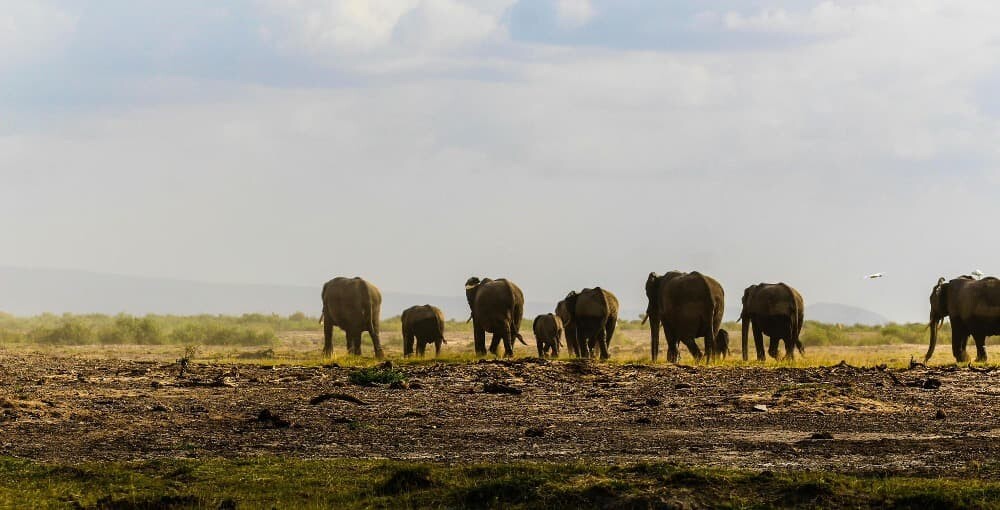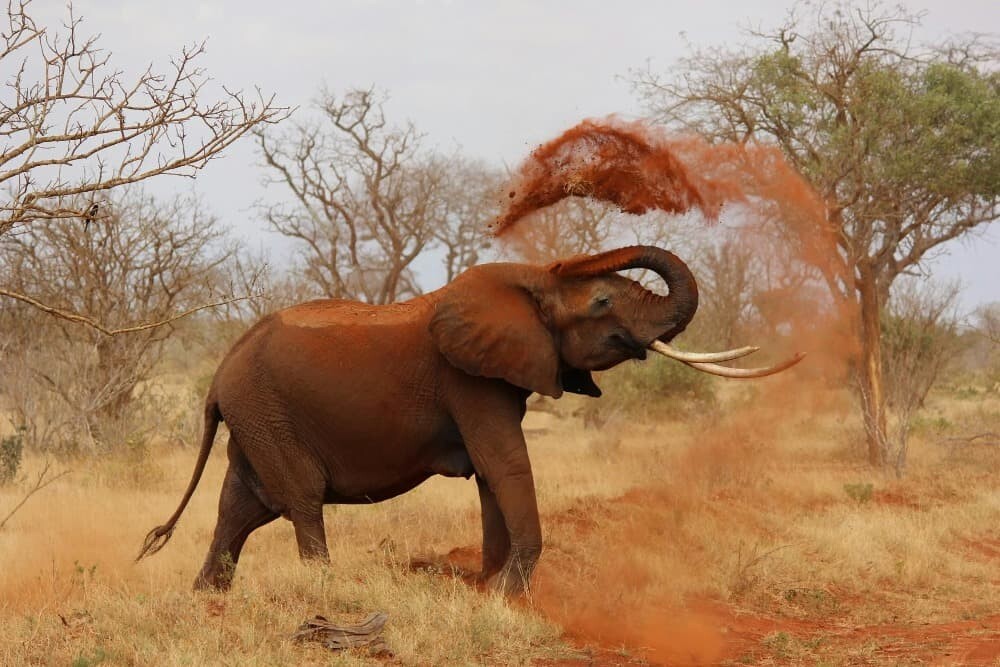The African savanna elephant is the largest within its species and also the largest terrestrial mammal in the world, capable of measuring up to four meters tall and weighing six tons or more.
They are distinguished by their ears, which are much larger than those of Asian elephants and have a shape similar to the African continent.

These animals are distributed in various regions of sub-Saharan Africa, mainly in savanna and forest areas. Cooperating Volunteers collaborate with some easily sighted countries, offering the opportunity to go on safaris in places like Kenya, Tanzania, and Uganda. In the different national parks and nature reserves of these countries, it is easy to see them in their natural environment.
Their diet is herbivorous, mainly consisting of grass, leaves, branches, and fruits. An adult elephant can consume up to 135 kg of food in a single day. Due to the large amount of food they need, they do not sleep much and cover long distances to find it.

SOME CURIOSITIES
- Their ears radiate heat, which helps them cool down, and they also greatly enjoy being in the water. They use their trunk to scoop up water and spray it over themselves, and then they cover themselves with a kind of dust for protection.
- They have exceptional hearing and can detect low-frequency sounds that travel long distances, allowing them to communicate with each other and detect dangers.
- Their curved tusks are made of ivory and can reach impressive lengths, used for defense, foraging, and digging.
- They are socially very complex animals, living in large groups led by an adult female called a matriarch. Females along with their calves form very close-knit groups, while males tend to be more solitary or join other herds temporarily.
- These animals have exceptional memory and can remember places, paths, and sources of water and food for years, enabling them to survive in changing habitats.
- They are ecosystem engineers, as their role is crucial in modifying and creating habitats. They knock down trees, spreading seeds, creating plant diversity, and reshaping the forest structure.
Although like many other species, they currently face all the challenges and threats caused by humans, their role is essential




